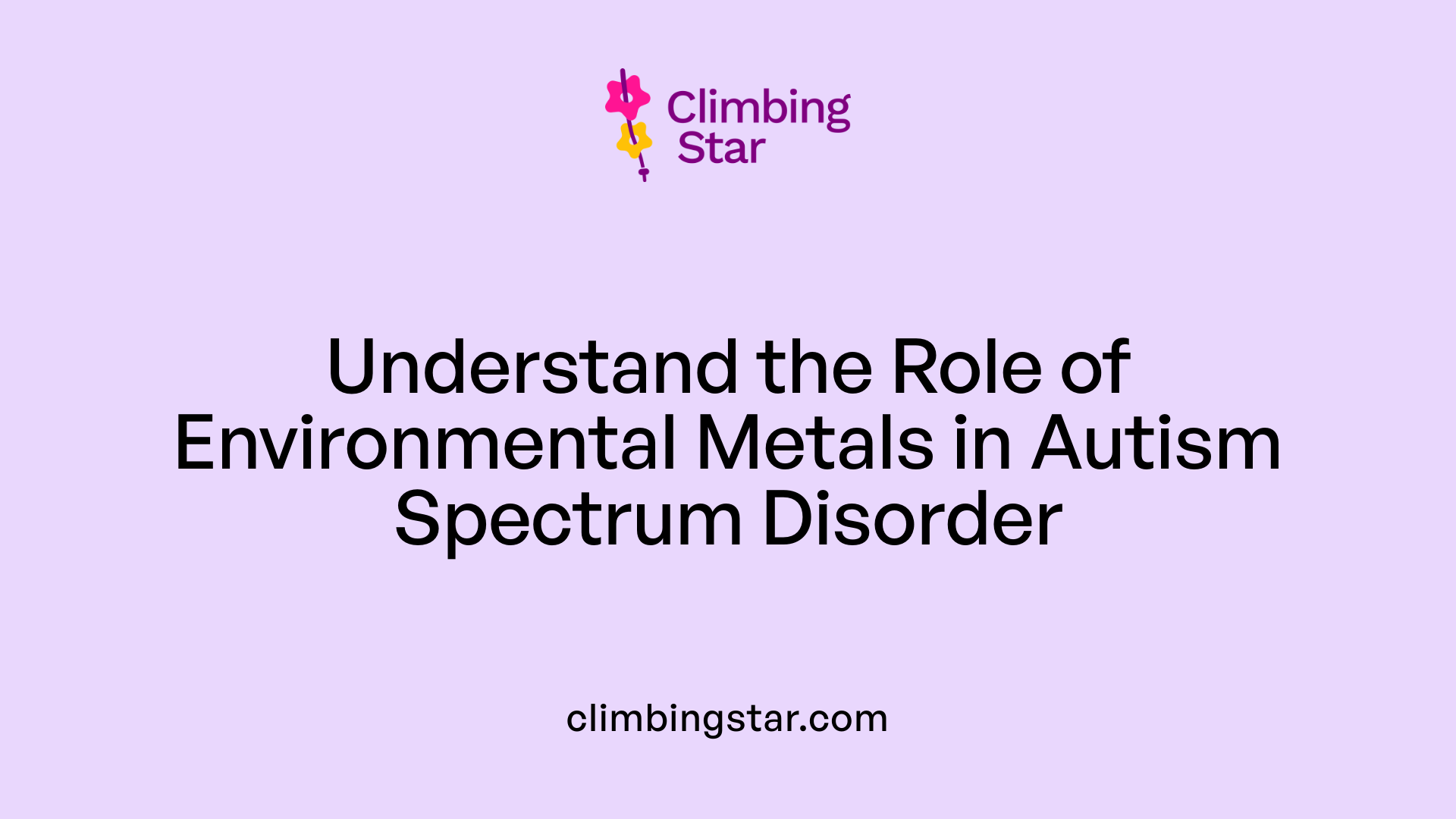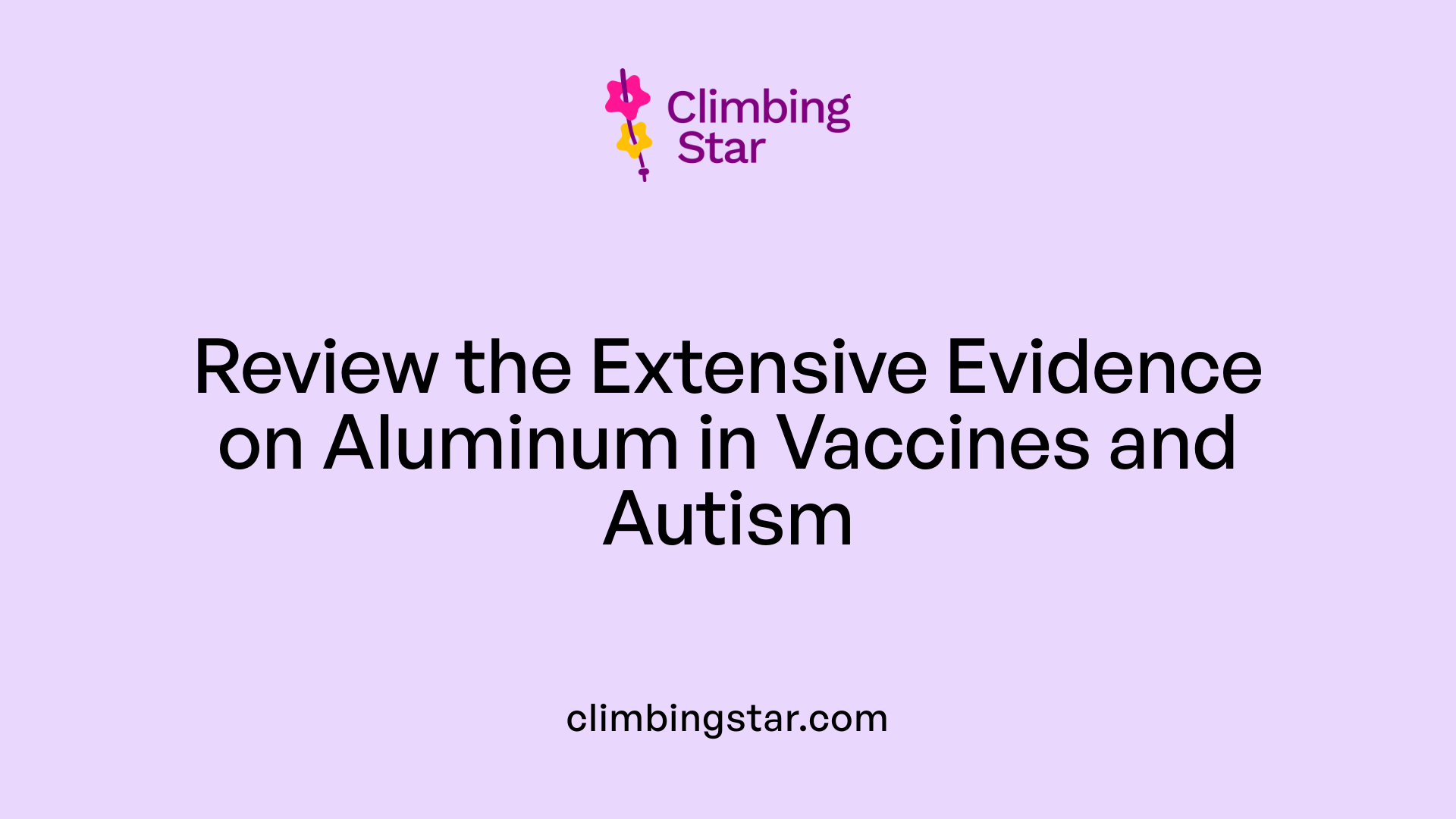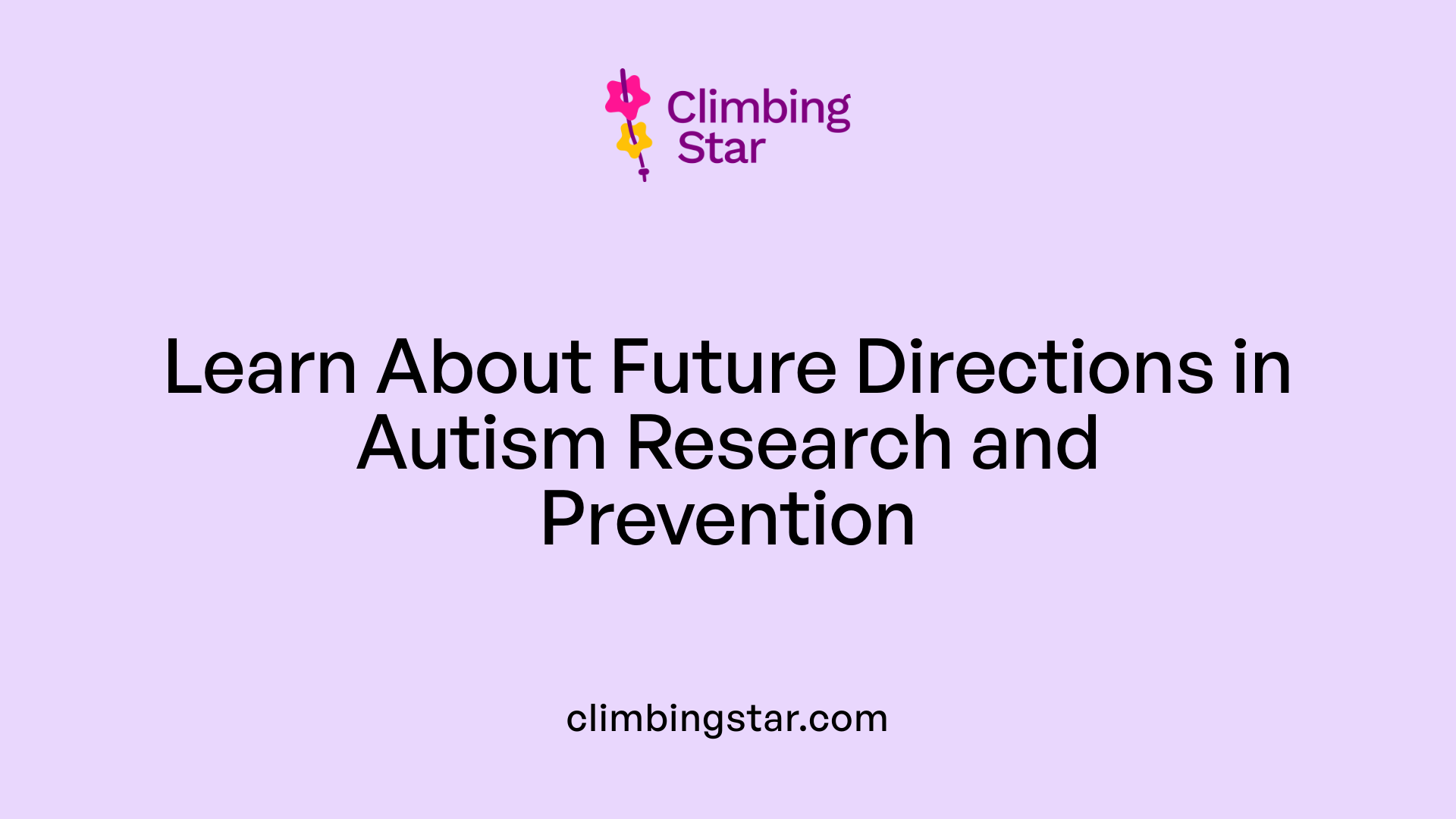Unraveling the Complexities of Autism and Environmental Factors
Autism Spectrum Disorder (ASD) is a multifaceted neurobehavioral condition with rising incidence worldwide. Various environmental factors, including exposure to certain metals like aluminum, have been studied to better understand their potential role in autism's development. This article explores current research on aluminum's association with ASD, the implications of neurotoxic metals, and how behavioral therapies like Applied Behavior Analysis (ABA) fit into the broader landscape of autism intervention.
Understanding Autism Spectrum Disorder and Metal Exposure

Incidence trends of ASD
Autism spectrum disorder (ASD) is a complex neurobehavioral condition with rising incidence, particularly noted alongside increased industrialization. This trend suggests environmental factors may play a role alongside genetic ones in the disorder's multifactorial origins.
Neurotoxic metals linked to neurological problems
Certain metals—aluminum, cadmium, and mercury—are prevalent environmental neurotoxins known to affect human neurological health. Given their widespread presence and toxicity, researchers have investigated their potential contributions to ASD development.
Systematic review findings on aluminum, mercury, and cadmium associations with ASD
A recent systematic review and meta-analysis incorporating 18 studies on aluminum, 18 on cadmium, and 23 on mercury have explored links between these metals and ASD. The meta-analysis found significant associations between all three metals and ASD, although individual study results varied.
Specifically, higher levels of mercury in hair, urine, and blood samples were positively correlated with ASD risk. Aluminum levels showed a more complex pattern: elevated levels in hair and urine were positively associated with ASD, while blood aluminum levels showed a negative association. Cadmium presented mostly negative associations in hair and urine samples.
Environmental and genetic factors influencing autism risk
The etiology of ASD involves both genetic predispositions and environmental exposures. For example, a positive family history dramatically increases autism risk. Maternal behaviors, such as the use of mercury-containing skin-whitening creams and frequent seafood consumption, can elevate heavy metal exposure in children.
Interestingly, some studies have reported paradoxical findings, such as lower hair lead levels associated with reduced ASD risk, possibly due to genetic or epigenetic differences in metal metabolism. Other environmental findings include the surprising association between absence of prenatal tobacco smoke exposure and increased ASD risk.
Does aluminum cause autism?
Current evidence presents a complex picture regarding aluminum and autism. Although meta-analyses reveal associations between aluminum (measured in hair and urine) and ASD, blood aluminum levels often show a negative association, indicating inconsistent results. Large epidemiological studies, such as a comprehensive Danish cohort study following over one million children for 24 years, found no increased risk of autism or neurodevelopmental harm from aluminum in vaccines. In fact, some data suggested a slight protective effect.
Given ASD's multifactorial causes—including genetic susceptibility, environmental exposures, and maternal factors—the role of aluminum remains unclear. More longitudinal research is needed to clarify exposure timing, dosage effects, and interactions with other risk factors.
| Aspect | Findings | Implications |
|---|---|---|
| ASD Incidence | Rising with industrialization | Supports environmental influence |
| Mercury | Positive association with ASD | Risk factor, links to maternal exposure |
| Aluminum | Mixed associations (hair/urine +, blood -) | Complex role, inconclusive causality |
| Cadmium | Negative association in hair/urine | Differing neurotoxicity effects |
| Genetic factors | Strong predictor via family history | Highlights hereditary influence |
| Maternal behaviors | Use of mercury creams, seafood intake | Modifiable exposure pathways |
| Large Danish study findings | No causal link between vaccine aluminum and autism | Reinforces vaccine safety on this front |
Large-Scale Epidemiological Evidence on Aluminum Safety

The Danish study following 1.2 million children over 24 years
A comprehensive Danish epidemiological study tracked 1.2 million children over 24 years to explore the relationship between aluminum exposure from vaccines and autism spectrum disorder (ASD). This research is notable for its extensive size and duration, providing robust data across different birth cohorts.
No link found between aluminum in vaccines and autism or neurodevelopmental harm
The findings revealed no statistically significant association between aluminum-containing vaccines and increased risk of autism or neurodevelopmental harm. Specifically, the study showed hazard ratios near 1 for Asperger's syndrome and a slightly protective effect for ASD, with a hazard ratio of 0.91 (95% CI: 0.87-0.96). This suggests that aluminum exposure from vaccines does not contribute to, and may not increase, ASD risk.
Study design leveraging vaccine policy changes as a natural experiment
A unique aspect of this study was its design, which took advantage of natural variations in vaccine formulations caused by policy changes over time. Different birth cohorts received varying aluminum doses, effectively creating a natural experiment. This approach minimized confounding biases commonly present in observational studies and avoided ethical challenges associated with unvaccinated control groups.
WHO Global Advisory Committee findings on aluminum vaccine safety
These Danish results align with global expert opinions, such as the World Health Organization’s Global Advisory Committee on Vaccine Safety. The WHO has monitored aluminum in vaccines for over 60 years, administering over 1 billion doses worldwide without finding any related health risks. This global consensus supports the conclusion that aluminum adjuvants used in vaccines are safe and not linked to autism or other neurological disorders.
This large-scale, well-designed research thus provides strong epidemiological evidence supporting vaccine aluminum safety and helps dispel concerns about its role in ASD development.
Heavy Metals and Their Divergent Impact on Autism Risk

What Did Meta-Analyses Reveal About Aluminum, Cadmium, and Mercury in ASD?
A comprehensive meta-analysis reviewed 18 studies each on aluminum and cadmium, and 23 on mercury, investigating their associations with autism spectrum disorder (ASD). While individual studies reported mixed results, the aggregate analysis found significant correlations between all three metals and ASD. This highlights a complex relationship where each metal's impact differs in magnitude and direction.
How Is Mercury Exposure Linked to ASD?
Mercury levels measured in hair, urine, and blood consistently show positive associations with ASD. For instance, children with hair mercury below 2.0 µg/g experienced an odds ratio of 19.3 for ASD, illustrating a strikingly elevated risk. Environmental and maternal factors heavily influence mercury exposure, with the use of mercury-containing skin-whitening creams notably increasing ASD risk. Additionally, frequent seafood consumption is another maternal behavior contributing to higher mercury levels in children.
What Does Cadmium Reveal About Autism Risk?
Contrasting mercury, cadmium levels in hair and urine are negatively associated with ASD, suggesting a possibly protective or non-causal role. The reasons behind this inverse relationship are not fully understood but may involve genetic or epigenetic differences altering cadmium metabolism or toxicity.
How Do Environmental Sources and Maternal Behaviors Influence Heavy Metal Exposure?
Sources such as environmental pollution and personal care products affect metal uptake. Skin-whitening creams containing mercury exemplify maternal practices that raise fetal and infant exposure to this neurotoxic element. Frequent seafood intake also plays a role in mercury accumulation. These findings underscore that ASD's etiology involves a multifaceted interplay of genetic susceptibility and environmental exposures, highlighting opportunities for targeted interventions to reduce risk.
| Metal | Association with ASD | Measurement Sites | Influential Factors |
|---|---|---|---|
| Mercury | Positive | Hair, urine, blood | Skin-whitening creams, seafood diet |
| Aluminum | Mixed | Hair (+), urine (+), blood (-) | Environmental exposure |
| Cadmium | Negative | Hair, urine | Possibly genetic/metabolic factors |
Understanding these divergent associations encourages continued research to define precise exposure windows and mechanisms influencing ASD development.
Applied Behavior Analysis (ABA): Therapeutic Approaches for Autism

What is Applied Behavior Analysis (ABA) therapy?
Applied Behavior Analysis (ABA) therapy is an evidence-based method that focuses on understanding and modifying behavior through learning principles. It seeks to teach useful skills while reducing behaviors that may interfere with daily functioning, especially in individuals with autism spectrum disorder (ASD). ABA uses structured approaches and positive reinforcement to encourage desirable behaviors.
How does ABA therapy benefit individuals with autism?
ABA therapy is highly effective in improving communication abilities, social skills, and daily living competencies. Its individualized and intensive interventions are tailored to meet the unique needs of each person. When started early and applied consistently, ABA can lead to significant improvements in intellectual development and enhance overall independence.
What are the common techniques used in ABA therapy?
Key strategies in ABA therapy include:
- Positive Reinforcement: Strengthening desired behaviors by providing rewards.
- Discrete Trial Training (DTT): Breaking down skills into small, manageable steps taught systematically.
- Task Analysis: Separating complex activities into simpler components.
- Modeling: Demonstrating behaviors for the individual to imitate. These approaches are adapted based on the individual's progress and preferences, supported by extensive scientific research.
Who typically provides ABA therapy services?
ABA therapy is delivered by qualified professionals such as Board Certified Behavior Analysts (BCBAs) and Registered Behavior Technicians (RBTs). Services are often provided through specialized centers or organizations dedicated to supporting individuals with autism. Treatment plans are developed after detailed assessment and collaboration with families to ensure personalized care.
Moving Forward: Research, Policy, and Prevention Strategies

Why is further research needed on metal exposure timing and impact?
Understanding the timeline and effects of neurotoxic metal exposure is crucial in clarifying their role in autism spectrum disorder (ASD). Current studies reveal mixed associations—some showing positive links between metals like mercury and aluminum with ASD, while others find negative or null relationships, especially concerning cadmium.
Longitudinal research focusing on critical exposure periods, such as prenatal and early childhood stages, would help determine when and how these metals impact neurodevelopment. It would also identify genetic or environmental factors that might modify these effects.
What policies exist regarding neurotoxic metal exposure and autism?
Evidence from meta-analyses and large epidemiological studies supports policies designed to reduce exposure to neurotoxic metals. These policies prioritize vulnerable groups, particularly pregnant women and infants, aiming to limit their contact with harmful substances like mercury, aluminum, and cadmium.
For example, the World Health Organization has confirmed the safety of aluminum in vaccines after decades of monitoring, yet efforts to minimize overall environmental metal exposure remain vital.
Why is protecting pregnant women and young children important?
Pregnant women and developing children are more susceptible to neurotoxicants due to critical periods of brain growth. Metals such as mercury have been linked to higher ASD risk when maternal exposure occurs during pregnancy, including from sources like mercury-containing skin creams or seafood.
Protecting these groups through education and regulation can prevent potentially harmful exposures that contribute to the complex etiology of ASD.
How can intervention strategies be informed by the multifactorial nature of ASD?
ASD arises from a combination of genetic, environmental, and behavioral factors. Recognizing the role of heavy metals adds a layer of modifiable risk. Intervention strategies can include promoting behaviors that reduce metal exposure, such as avoiding mercury-based products and monitoring seafood consumption.
Educational campaigns and targeted public health policies can help mitigate environmental risks, complementing efforts addressing genetic vulnerability and other environmental influences.
| Aspect | Details | Implications |
|---|---|---|
| Research | Need for longitudinal studies on exposure timing and outcomes | Clarify causality and critical exposure windows |
| Policy | Guidelines to limit neurotoxic metal exposure, especially for vulnerable populations | Potential reduction in ASD incidence |
| Protection of Vulnerable Groups | Focus on pregnant women and young children in exposure prevention strategies | Minimize neurodevelopmental harm |
| Intervention Strategies | Emphasize multifactorial nature of ASD, targeting environmental and genetic risk factors | Holistic risk reduction approach |
Interpreting the Evidence on Aluminum and Autism
While neurotoxic metals like aluminum are a subject of ongoing research in the context of autism, definitive causal relationships have yet to be confirmed. Large epidemiological studies, including those examining aluminum in vaccines, find no increased autism risk, reinforcing vaccine safety. However, the complex interplay of genetics, environmental factors, and maternal behaviors highlights the multifactorial nature of ASD. Applied Behavior Analysis therapy remains a cornerstone of effective intervention for autistic individuals, promoting meaningful improvements in skills and quality of life. Continued scientific inquiry and preventive policies will be vital to further unravel aluminum’s role and enhance support for individuals with autism.







